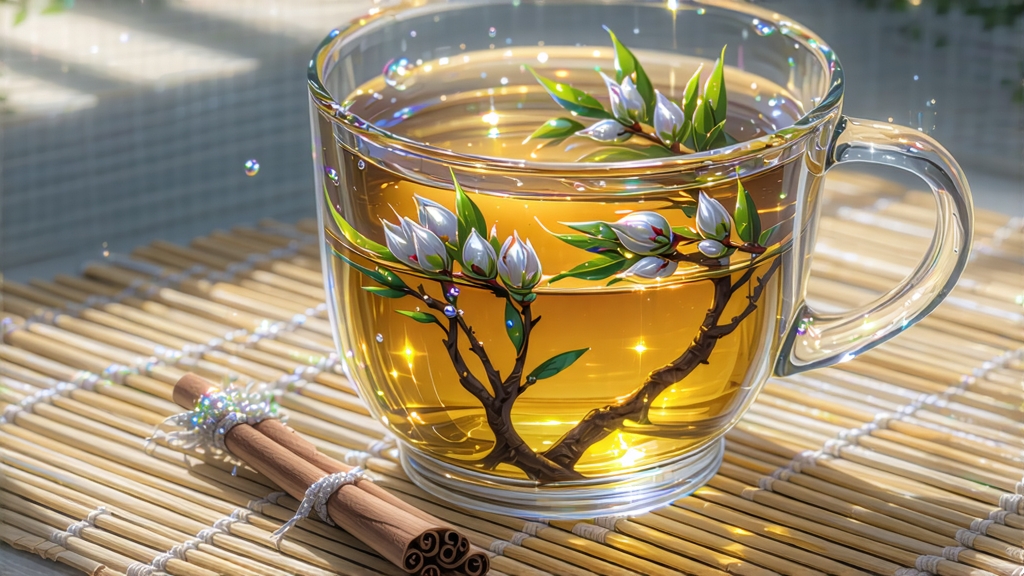
If green tea is the exuberant youth of Chinese tea culture and pu-erh the venerable elder, then white tea—especially Fuding Silver Needle (Bai Hao Yin Zhen)—is the contemplative poet who arrives at dawn, speaks in hushed tones, and vanishes before the marketplace stirs. Grown along the mist-laden hills of northern Fujian’s Fuding and Zhenghe counties, Silver Needle is the most aristocratic member of the white-tea family, plucked only in early spring when the tea bush awakens and offers its first solitary buds. These buds, still closed like tiny spears and sheathed in silvery-white down, look as though they have been dipped in moonlight. When handled correctly they can age for decades, slowly oxidizing from within and developing aromas of dried apricot, sandalwood, and mountain honey.
Historical whispers place white tea’s birth during the Song dynasty (960-1279), when imperial tribute lists first recorded “white buds” sent from Fujian to the capital. Yet Silver Needle as a defined style did not emerge until the late eighteenth century, when improved roadways allowed Fuding farmers to sell their most delicate pickings beyond local markets. By the Qing dynasty the tea had become so coveted that county magistrates sealed each bamboo basket with red wax and a copper tally guaranteeing authenticity—an early anti-counterfeit measure that pre-dates Europe’s appellation systems.
The cultivars behind the tea are equally local. Fuding Dabai (Big White) and Fuding Dahao (Big Hair) bushes produce unusually fat buds rich in amino acids and covered in a protective trichome layer. These microscopic hairs scatter light, giving the dried tea its metallic shimmer and contributing a velvety mouthfeel that Chinese tasters describe as “walking through downy snow.” Because the plants are left mostly unpruned, they grow into small trees whose deep roots pull mineral notes from weathered granite soils.
Craftsmanship is disarmingly simple yet unforgiving. The harvest window lasts barely ten days each March, beginning when the morning dew still clings to the buds and ending before the first leaf unfurls. Pickers work opposite the sun, snapping each bud at the base to avoid the slight green stem that would darken the cup. No shaking, no squeezing, no baskets deeper than ten centimeters—every motion is designed to prevent premature bruising. Once collected, the buds are spread one layer thick on bamboo trays and left to wither for thirty-six to forty-eight hours. The genius of the process lies in reading the weather: on cool dry days with gentle mountain breezes the withering shed windows stay open, allowing moisture to leave the bud slowly; should the air become humid, charcoal fires built from local lychee wood raise the temperature just enough to keep the tea from souring. No pan-firing, no rolling, no baking—only time and air coax the enzymes into a partial oxidation that hovers between 5 % and 12 %. When the bud feels leather-tough and releases a faint scent of cucumber skin, the tea master knows it is ready for a low-temperature bake at 40 °C to fix the aroma. The entire cycle consumes less energy than it takes to boil the kettle that will eventually brew the tea, yet the margin for error is measured in minutes.
Storage is the next art. Traditional families wrap Silver Needle in soft Xuan paper, slip it into a fired earthen jar, and bury the jar in a cool corner of the house where the year’s soy sauce crocks stand sentinel. Modern exporters prefer triple-layer aluminum pouches flushed with nitrogen, but collectors seeking aged complexity still favor breathable containers that allow micro-oxidation. A five-year-old needle begins to show amber flashes in the liquor; at fifteen years it smells of dried longan and old parchment; beyond twenty it enters the realm of Chinese medicinal fragrance, prized for its cooling properties and its ability to soothe a smoker’s throat overnight.
Brewing Silver Needle is less choreography than meditation. Begin with still mineral water whose hardness sits below 120 ppm; high calcium levels flatten the delicate amino acids. Warm a tall glass or a porcelain gaiwan by swirling 85 °C water, then discard. Measure one gram of buds for every twenty milliliters of volume—about a heaping teaspoon for a 150 ml vessel. Let the water cool to 80 °C; hotter temperatures scorch the down and release harsh tannins. Pour in a thin stream, coaxing the buds to rotate like slow-motion snowflakes. Cover and steep for forty-five seconds.